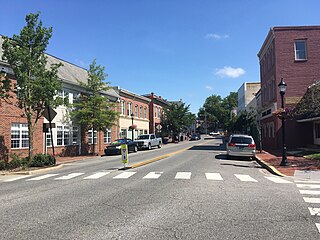
Milford is a city in Kent and Sussex counties in the U.S. state of Delaware. According to the 2010 census, the population of the city is 9,559.
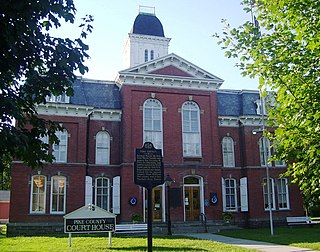
Milford is a borough in Pike County, Pennsylvania, United States, and the county seat. Its population was 1,021 at the 2010 census. Located on the upper Delaware River, Milford is part of the New York metropolitan area.
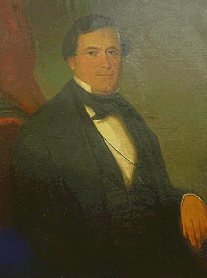
William Tharp was an American farmer and politician from Milford in Kent County, Delaware. He was a member of the Democratic Party, who served in the Delaware General Assembly and as Governor of Delaware.
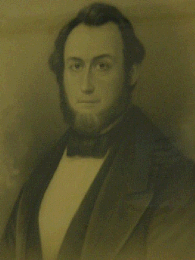
Peter Foster Causey was an American merchant and politician from Milford, in Kent County, Delaware. He was a member of the American Party, who served in the Delaware General Assembly and as Governor of Delaware.

William Burton was an American physician and politician from Milford, in Kent County, Delaware. He was a member of the Democratic Party, who served as Governor of Delaware.

The South Glastonbury Historic District is a historic district in Glastonbury, Connecticut. It encompasses the historic village center of South Glastonbury, which was first settled in the 17th century. The district was listed on the National Register of Historic Places in 1984, and enlarged in 2009 to include properties further along Main Street as far as Chestnut Hill Road. Locals refer to it as Nayaug.

The Eells-Stow House is operated as a historic house museum at 34 High Street in Milford, Connecticut. Built as a private residence and with a construction history dating to c. 1700, it is believed to be Milford's oldest surviving building. It has a complex history of later additions and alterations. It was listed on the National Register of Historic Places in 1977. It is now owned by the Milford Historical Society.

New Milford station is a former railroad station on Railroad Street in New Milford, Connecticut. Built in 1886 by the Housatonic Railroad Company, it cemented the town's importance as a regional tourist and business center. It served passenger service until 1970, and is now home to the Greater New Milford chamber of commerce. It was listed on the National Register of Historic Places in 1984.

Forester's Hall, also known as Forest Hall, is a historic commercial building located at Milford, Pike County, Pennsylvania. The original section was built in 1886, and expanded in 1904. It is a large three-story, eight-bay wide building constructed of bluestone. It features a steep pointed roof, small towers, gables, dormers, and three bluestone chimneys in a Châteauesque style.

Jervis Gordon Grist Mill Historic District, also known as Milford Grist Mill and Rowe's Mill, is a historic grist mill and national historic district located at Milford, Pike County, Pennsylvania. The district includes three contributing buildings and one contributing structure. The buildings are a late-19th century grist mill, blacksmith complex, and millers house. The contributing structure consists of the mill pond, dam, head race, and tail race.

Milford is a historic railroad station located at Milford, Sussex County, Delaware. It was built in the early 1860s, and is a one-story, five bay, brick building with a hipped roof and extended overhangs.
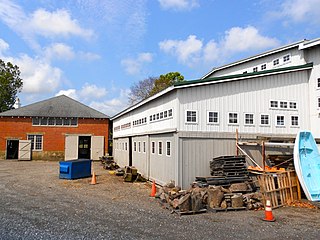
Milford Shipyard Area Historic District is a national historic district located at Milford, Sussex County, Delaware. The district includes 18 contributing buildings, including the original Vinyard Shipyard and surrounding workers' houses. The shipyard buildings are the combination office and warehouse, mold/sail loft, boat house (1929), and machine shop. The remaining buildings are primarily one and two-story, frame, center hall plan dwellings built about 1870.
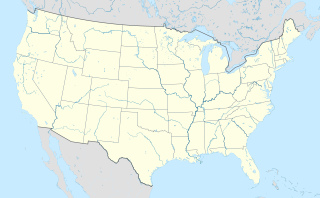
Mill House is a historic home located at Milford, Kent County, Delaware. The house is located across from the Parson Thorne Mansion. It is a late-18th century, two-story, three bay, brick dwelling with a frame rear wing. It has a 2/3 Georgian side hall plan. It was owned by Delaware Governor Peter F. Causey (1801–1871) and was a rental property for the family.

North Milford Historic District is a national historic district located at Milford, Kent County, Delaware. It encompasses 98 contributing buildings, 2 contributing sites, and 1 contributing structure in the original town as laid out in 1787. It mainly consists of residential and commercial buildings, the majority of which were built before 1860. They include examples of the Greek Revival and Federal styles. Notable buildings include the "Billy Welch House," Welch/Hart House, "Sudler Apartments" (1793), James Hall House, and the "Towers", home of Governor William Burton (1859-1863). The Christ Church, James McColley House, Mill House, and Parson Thorne Mansion are located in the district and listed separately.

Suffolk Historic District is a national historic district located at Suffolk, Virginia. The district encompasses 514 contributing buildings, 3 contributing structures, and 3 contributing objects in Suffolk. The district includes a variety of residential, commercial, governmental, and institutional buildings. They are in a variety of vernacular and popular 19th and 20th century architectural styles including Greek Revival, Queen Anne, and Bungalow. Notable buildings include the Allmond Building (1914), Macedonia A.M.E. Church, National Bank of Suffolk (1914-1920), the Old Post Office, old Nansemond County Courthouse, John Granberry house, Richard Seth Eley House (1878), Jones Building, Suffolk Towers, Virginia Apartments (1918-1920), Causey-Kendrick house (1882), Masonic Hall (1911), Suffolk High School (1922), Jefferson High School (1911), old Methodist Church (1861), St. Paul's Episcopal Church (1895), Suffolk Christian Church (1893), and Congregation of Agudath Achin. Located in the district are the separately listed Phoenix Bank of Nansemond, Professional Building, and Riddick House.

West End Historic District is a national historic district located at Suffolk, Virginia. The district encompasses 201 contributing buildings and 93 contributing structures in a primarily residential section of the city of Suffolk. The district includes buildings dating from the last decade of the 19th century through the first four decades of the 20th century in a variety of popular architectural styles including Queen Anne and Folk Victorian. The residences were developed to support the growing upper-, middle-, and working-class populations. Notable buildings include the J. C. Causey, Jr. House, Oxford United Methodist Church (1922), and West End Baptist Church (1938).

Attica Main Street Historic District is a national historic district located at Attica, Fountain County, Indiana. The district encompasses 36 contributing buildings, 1 contributing site, and 2 contributing structures in a predominantly residential section of Attica. It developed between about 1840 and 1940, and includes notable examples of Late Victorian, Greek Revival, and Federal style architecture. Located in the district is the separately listed Marshall M. Milford House. Other notable contributing resources include McDonald Park, Parker-Clark House, Attica Presbyterian Church (1849), Ziegler House, Rolphing-Colvert Home, "Ladies Library" (1889), former Church of Christ (1891), and Attica Methodist Church (1921).

West Washington Historic District is a national historic district located at South Bend, St. Joseph County, Indiana. It encompasses 330 contributing buildings in an upper class residential section of South Bend. It developed between about 1854 and 1910, and includes notable examples of Italianate, Greek Revival, and Romanesque Revival style architecture. Located in the district are the separately listed Morey-Lampert House, Oliver Mansion designed by Lamb and Rich, Second St. Joseph County Courthouse, South Bend Remedy Company Building, and Tippecanoe Place. Other notable buildings include the Bartlett House (1850), Birdsell House (1897), DeRhodes House designed by Frank Lloyd Wright, Holley House, Kaiser-Schmidt House, Listenberger-Nemeth House, Meahger-Daughterty House (1884), O'Brien House, Oren House, The People's Church (1889), St. Hedwig's Church, St. Patrick's Church (1886), St. Paul's Memorial United Methodist Church (1901), West House, and a rwo of worker's house.
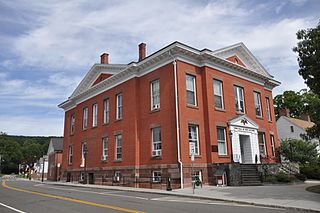
The New Milford Center Historic District encompasses much of the traditional civic and commercial heart of New Milford, Connecticut.

The North Milford Village Historic District is a historic district located in Milford, Michigan, including the commercial area along Main Street from the Huron River to Summit, industrial areas around the mill ponds west of Main, and residential areas east of Main. The district was listed on the National Register of Historic Places in 2000.






















